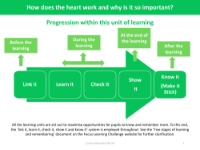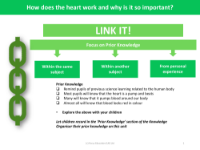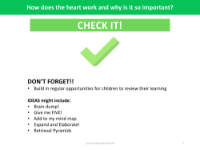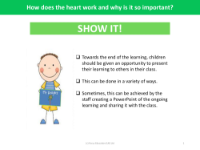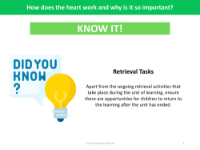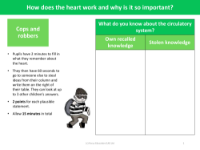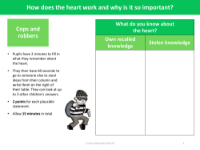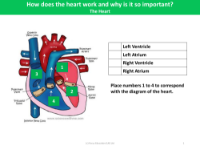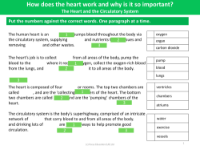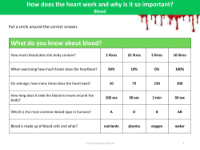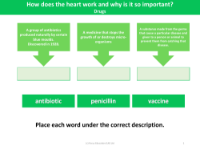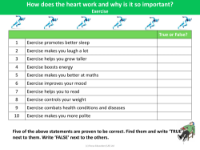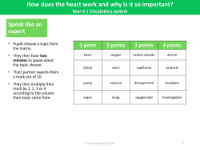Knowledge organiser - Heart and the Circulatory system - Year 6
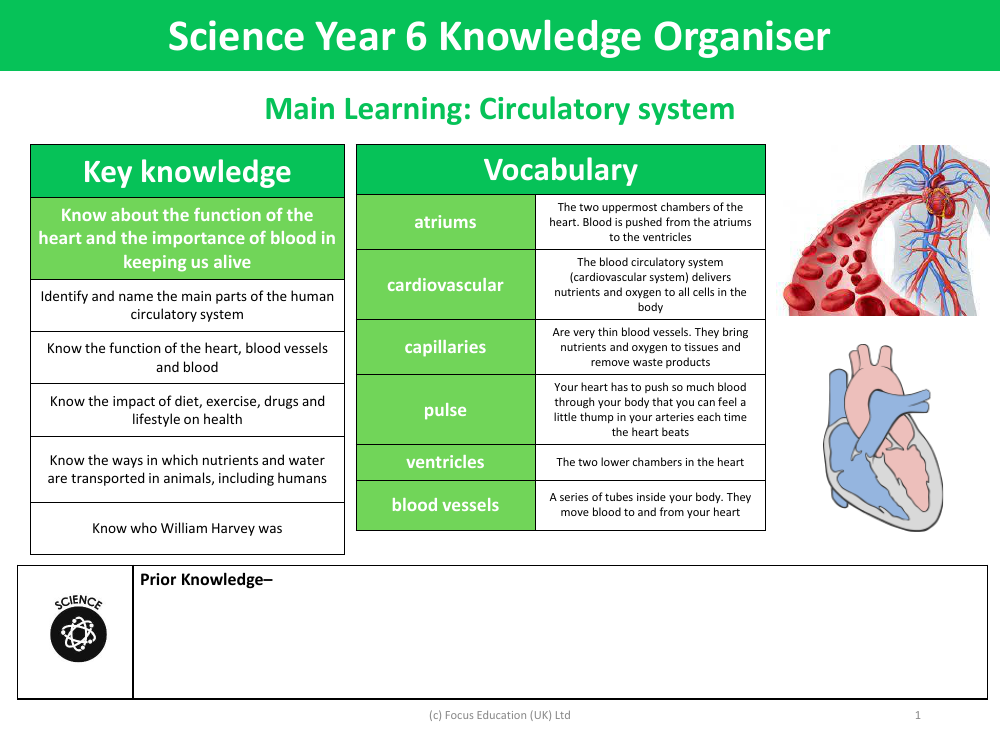
Science Resource Description
In Year 6 science, students explore the intricacies of the heart and the circulatory system. The vocabulary section introduces key terms such as 'atriums', which are the two upper chambers of the heart that push blood into the ventricles below. The term 'cardiovascular' refers to the blood circulatory system that is responsible for delivering nutrients and oxygen to every cell in the body. 'Capillaries' are highlighted as extremely thin blood vessels that facilitate the exchange of nutrients, oxygen, and waste products between the blood and tissues. The 'pulse' is the palpable thump felt in the arteries with each heartbeat, indicating the force with which the heart pumps blood.
The knowledge organiser also defines 'ventricles' as the heart's two lower chambers, and 'blood vessels' as the network of tubes transporting blood throughout the body. Key knowledge areas cover the function and importance of the heart and blood, the identification of the main parts of the circulatory system, and understanding the roles of the heart, blood vessels, and blood. Students are expected to learn about the effects of diet, exercise, drugs, and lifestyle on health, as well as the mechanisms by which nutrients and water are transported within animals, including humans. Additionally, the organiser points to the historical figure William Harvey, recognizing his contributions to the understanding of the circulatory system. This comprehensive overview prepares students for the main learning focus on the circulatory system, building upon their prior knowledge.

